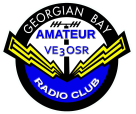2023-01-22, 20:54:04
That was a good article in the newsletter regarding hardline splicing. Thanks Tom.
I didn't get my Yagi up this past summer so my 1/2" Heliax sits in two pieces. I have an Andrews connector specifically for splicing hardline, and I also have a collection of "N" connectors with bulkhead connectors for joining them.
I was particularly interested in the newsletter article using copper tubing. I'm curious what one would use for a dielectric after the centre conductor was joined but before the 1/2" copper tubing was installed on the outside jacket?
What I like about this method is it would minimize the weak spot where the hardline might want to kink. Open to suggestions.
73 Rob
I didn't get my Yagi up this past summer so my 1/2" Heliax sits in two pieces. I have an Andrews connector specifically for splicing hardline, and I also have a collection of "N" connectors with bulkhead connectors for joining them.
I was particularly interested in the newsletter article using copper tubing. I'm curious what one would use for a dielectric after the centre conductor was joined but before the 1/2" copper tubing was installed on the outside jacket?
What I like about this method is it would minimize the weak spot where the hardline might want to kink. Open to suggestions.
73 Rob




